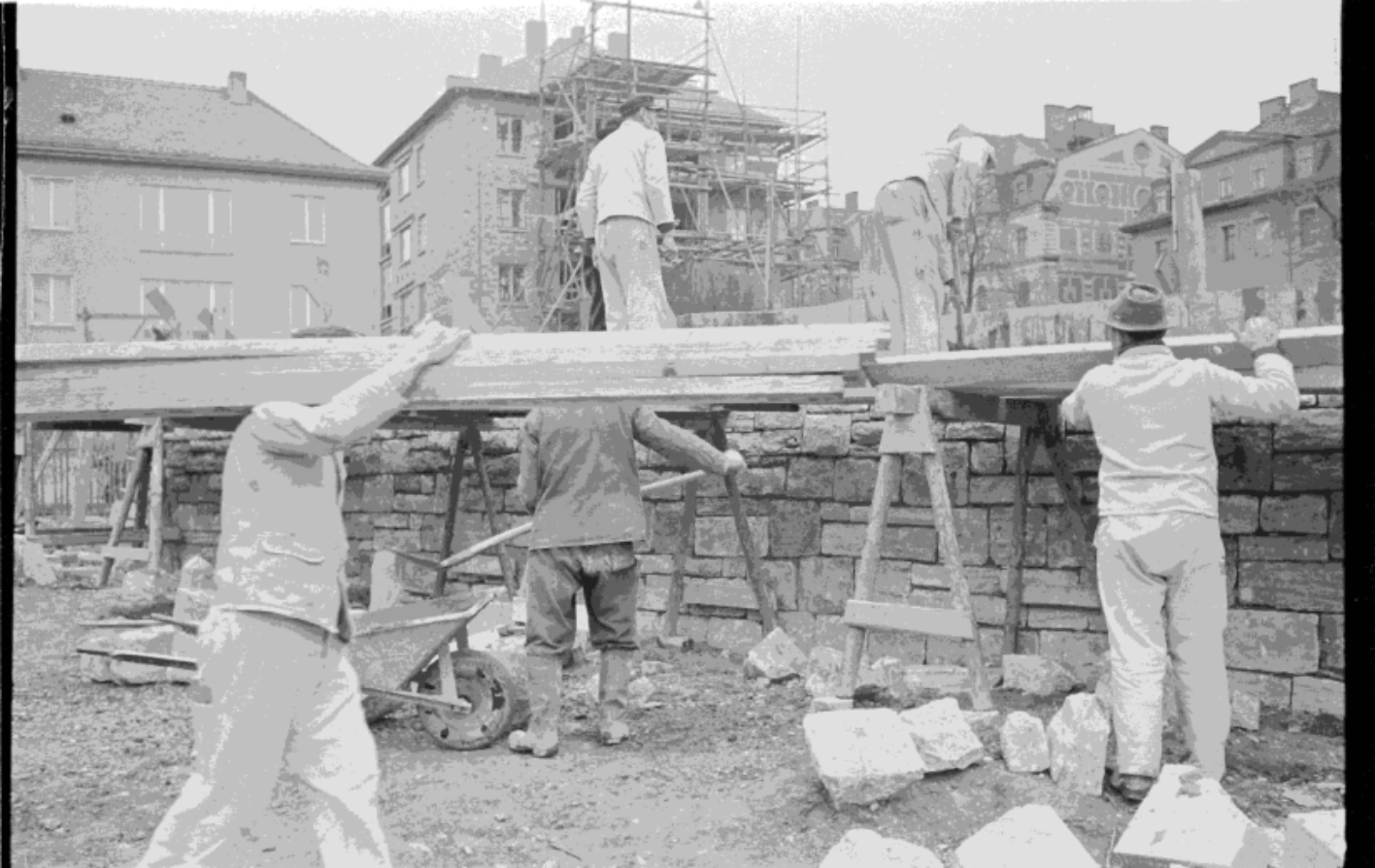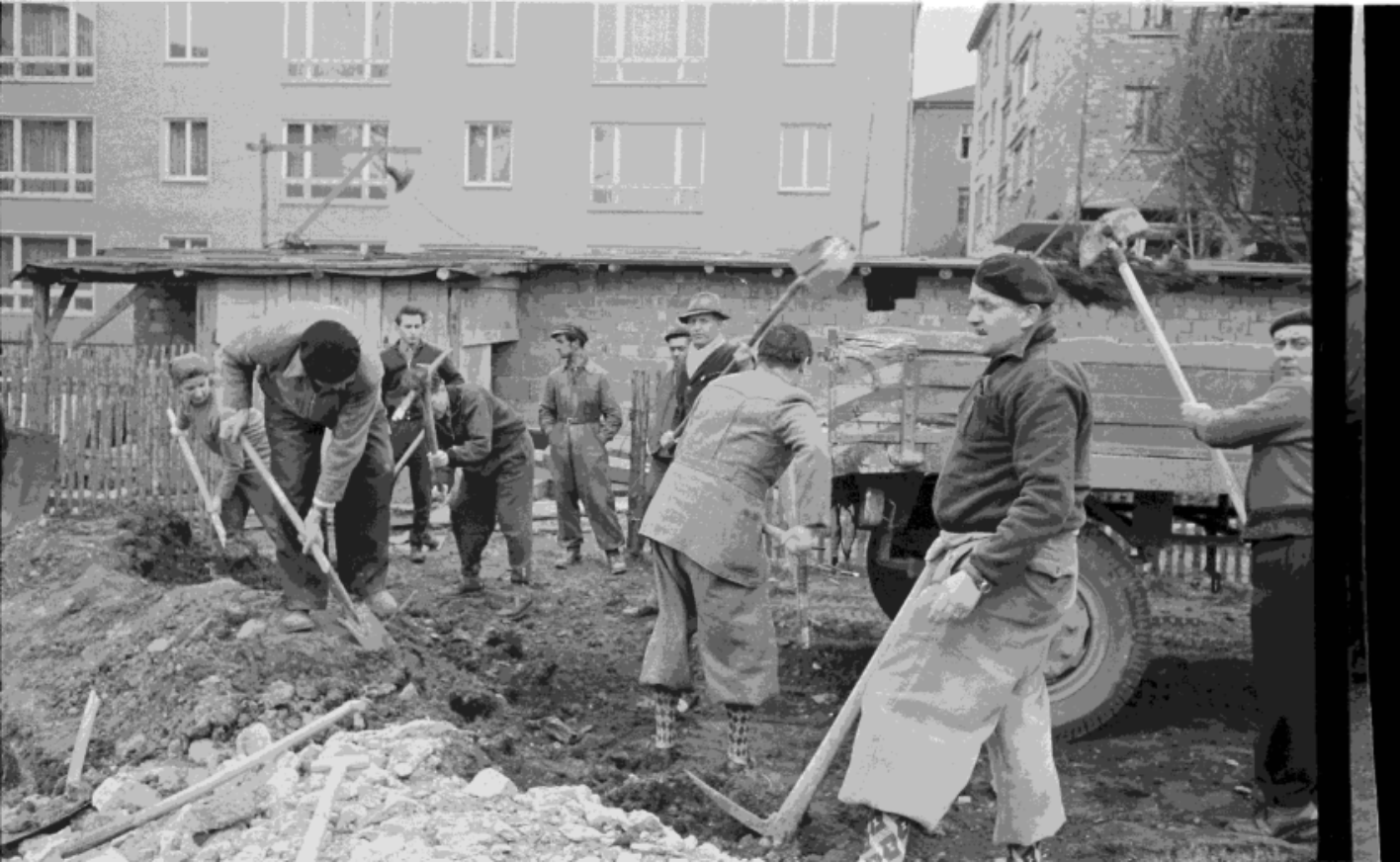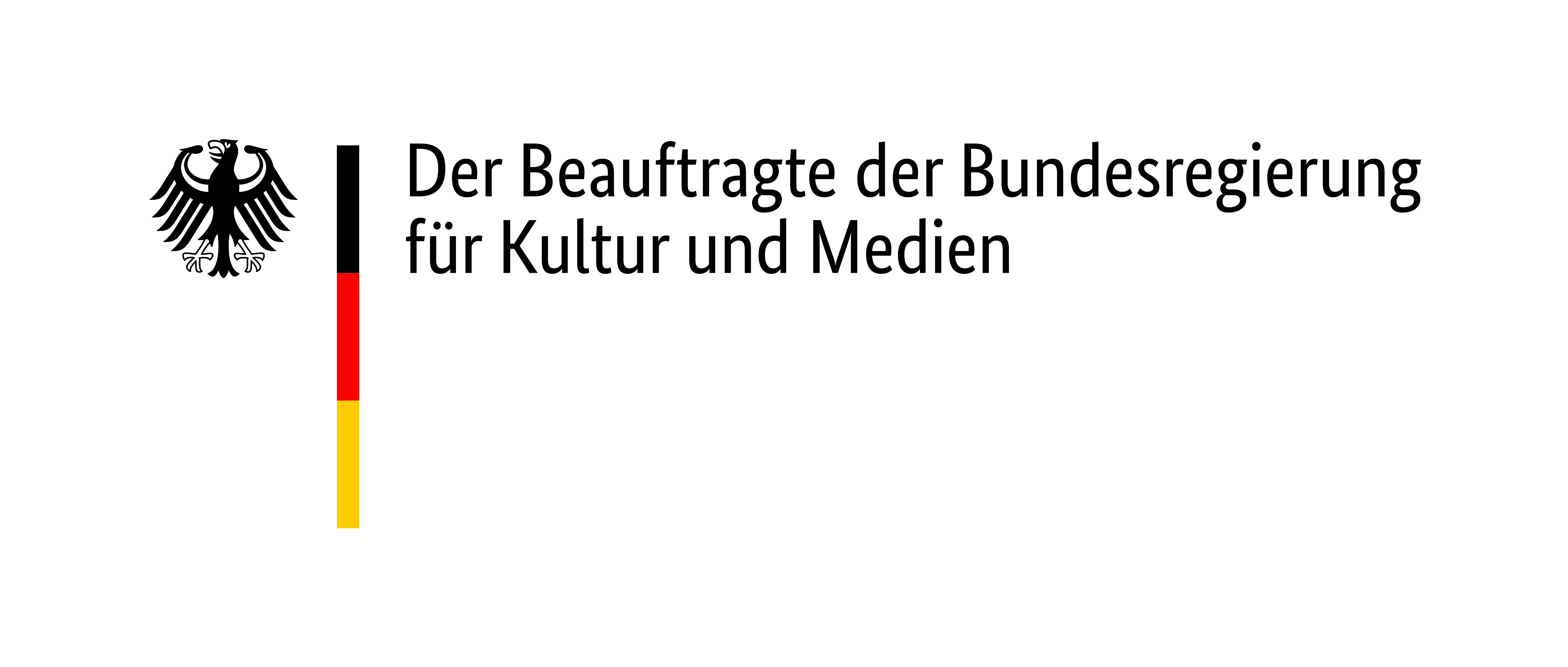


The monument project was generously funded by an advertising campaign, which raised 127,000 marks by the beginning of 1957, and additional lottery funds. In addition, volunteers contributed over 2,000 hours of charitable labour during the construction of the monument as part of the National Development Programme.
At the same time, however, the procurement of materials, namely copper and tin for the production of the bronze for "Teddy's" statue, proved to be extremely difficult. The civil engineering work began in March 1958 and the motto "From your sacrifice grows our socialist deed" on the 20 metre long semi-circular travertine-clad wall behind the statue was designed by the writer
Der Abschluss der Bauarbeiten und die Errichtung der Statue gelangen erst unmittelbar vor der kurzfristig auf Sonntag, den 17. August verlegten Einweihung. Die umliegenden Gebäude waren zu diesem Zeitpunkt noch nicht bezugsfertig. Die Einweihungsfeierlichkeiten sahen nicht nur politisch prominente Akteure wie den ehemaligen thüringischen Ministerpräsidenten August Frölich und Rudolf Jahn, ehemaliger Ministerpräsident von Brandenburg und stellvertretender Vorsitzender des Buchenwaldkomitees. Der Vorbeimarsch von über 7.000 Angehörigen der Kampfgruppen der Arbeiterklasse gab dem Tag darüber hinaus ein geradezu martialisches Gepräge – den Sinnspruch des Denkmals plakativ aufgreifend. Auch die städtische Bevölkerung war in großer Zahl erschienen. Damit hatte man dem Weimarer Thälmann-Denkmal, dem zweiten seiner Art in der gesamten DDR, von Anfang an einen prominenten Platz in der offiziellen Erinnerungskultur der Ilmstadt zugewiesen.

